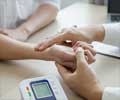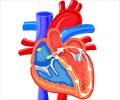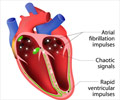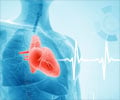The latest statistics regarding the use of pacemakers and implantable cardiac devices in Europe was presented on Sunday 21 June, at EUROPACE 2009.
The latest statistics regarding the use of pacemakers and implantable cardiac devices in Europe was presented on Sunday 21 June, at EUROPACE 2009, the meeting of the European Heart Rhythm Association (EHRA)1 which takes place in Berlin, Germany from 21 to 24 June.
These facts and figures, including the current status of healthcare systems across the continent, were included in the EHRA White Book2."This document is intended to be the starting point in a move towards a homogeneous way of looking at data, resources, physicians, etc., across Europe. Comparison among the countries belonging to the European Society of Cardiology (ESC)3, should help to standardise health resources by promoting knowledge of the status and bringing it to the attention of all public authorities" explained Christian Wolpert, Chairman of the National Societies who contributed the information gathered in the White Book.
"One of the roles of a European Association like the European Heart Rhythm Association (EHRA), a registered branch of the European Society of Cardiology (ESC), is to promote equal access to therapy for all patients across Europe. To do so, the first step is to compile data on the current situation in various ESC membership countries, compare them, and propose actions to move towards harmonization. The current leadership of EHRA agreed on the importance of obtaining as much current information as possible concerning the situation of the practice of electrophysiology in Europe" stressed Wolpert.
Under the leadership of Professors Christian Wolpert from Germany, Panos Vardas from Greece and Josep Brugada from Spain, a group worked to collect the most recent figures. To ensure up to date data, Presidents of the different Working Groups and National Societies were contacted and asked not only to provide data, but also to verify and authorize all the information that became available through various sources.
Wolpert declared that this data is also the point of comparison for the future: " By knowing where we are today, we will be able to benchmark in the future and see how diverse countries evolve. This means that this book must be an ongoing process, with updated information, new and additional data, and the inclusion of information from those countries that have not yet been able to collect and transmit their records."
Explaining the data, Prof Wolpert highlighted certain trends, such as the fact that "more and more, cardiologists represent the majority of implanters while surgeons are decreasingly active in these procedures."
Advertisement
- Guideline implementation. Advertisement
- The number of trained physicians and specialised centres
- The number of implantations which seems to depend not only on reimbursement and financial resources, but also to be a function of the number of centres and physicians dedicated to electrophysiology and implantation of devices.
- The numbers of ICD implanting centres range from less than 1 to 6.87 per million citizens.
- Pacemaker therapy is performed in the range of 88 to a maximum of around 1200/ million inhabitants.
- ICD implant rates including CRT-D devices range from approx. 2.5 to 354 per million inhabitants. The data shows an increase for a subset of 16 western and northern European countries around 15% from 2006 to 2007.
- Regarding a potentially different medical consensus in specific countries the use of biventricular pacemakers vs. biventricular ICDs shows a 8:1 ratio at the highest down to 1:1.2 ratio as the lowest.
- In the field of invasive electrophysiology and catheter ablation for supraventricular and ventricular arrhythmias the number of centres available is variable ranging from less than 0.2 to more than 3 centres/ million. The total number of catheter ablations is increasing and reaches a maximum of more than 200/ million in approx. half of the countries. However, there is a strong discrepancy comparing all 35 countries, displaying a wide range from less than 20 to more than 450/ million.
- The same is true for catheter ablation of atrial fibrillation which varies tremendously, linked to reimbursement policies but also to different approaches in the various EP societies.
"As an example, Germany, hosting the EUROPACE meeting this year, has one of the highest implant rates for ICD's in Europe with a total of 1037 centres which implant pacemakers; 200 centres implanting CRT resynchronisation devices and a total of 360 ICD implanting institutions" highlights Prof Wolpert.
"Within the Non-EU ESC member countries, there has been a steady increase of therapy availability and disease coverage, however, there are still many countries that struggle with reimbursement, trained personnel and technical support, which requires a strong effort and leaves much space for improvement. It is the task and the intention of EHRA to support any initiative to improve steadily the situation for these countries in order to reduce the disparities".
The first EHRA White Book was published in 2008 containing information for 2006 and 2007 from 35 of the 51 ESC member countries from all sites of Europe and parts of the Middle East. The book was made fully available to the public in an electronic version and within short time it became one of the most popular downloads in the EHRA website.
"We hope that this book will be useful to all electrophysiologists and health care providers in Europe and will initiate an era of evolution towards a more unified Europe in terms of equal access to therapy for all patients, regardless of their country origin", concluded Prof Wolpert.
Source-Eurekalert
LIN















